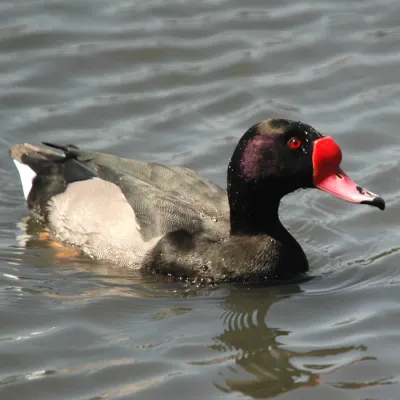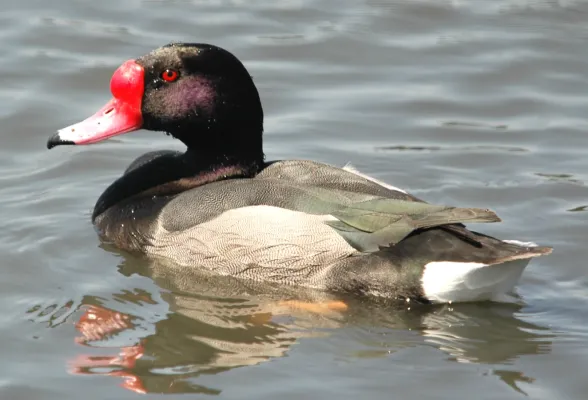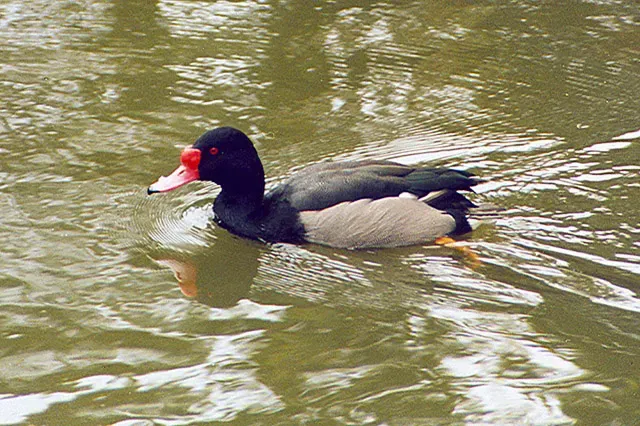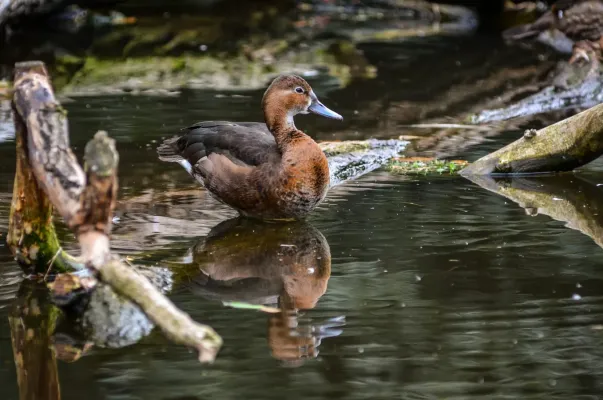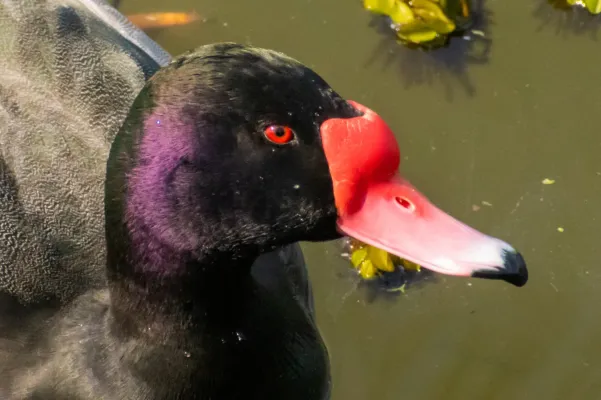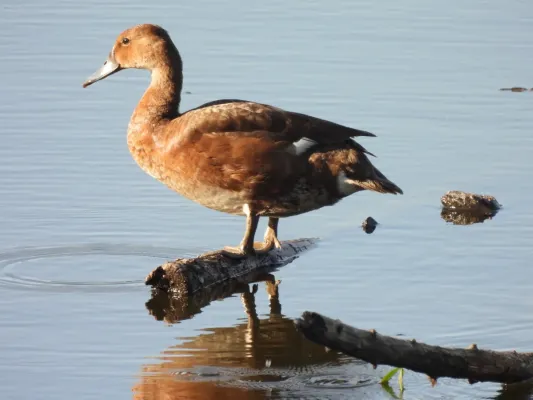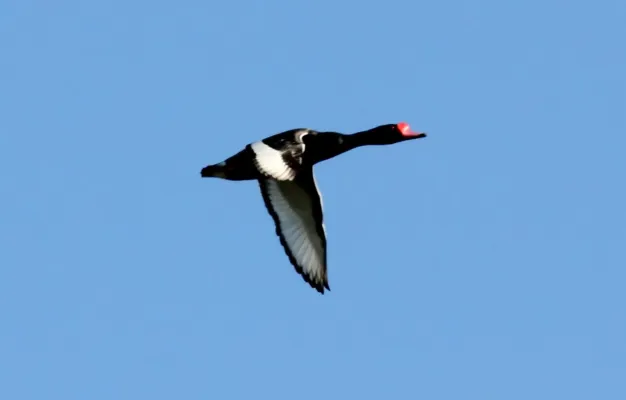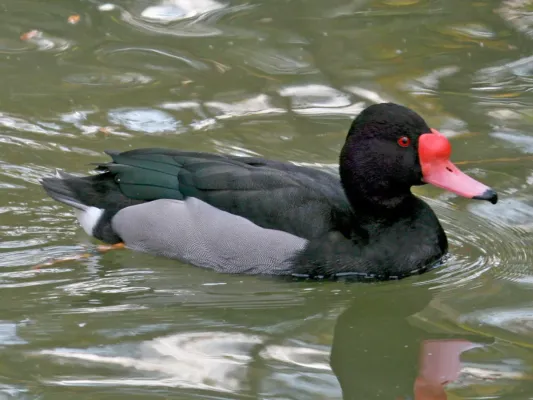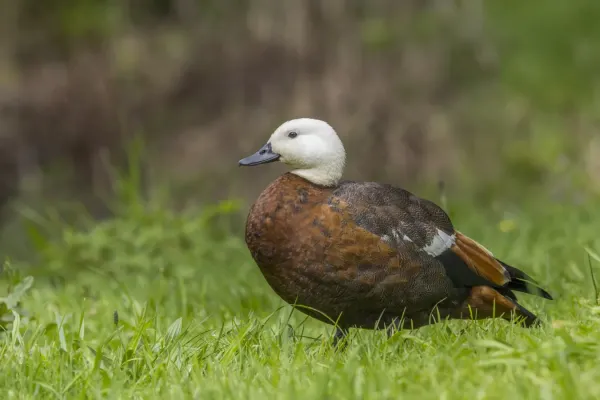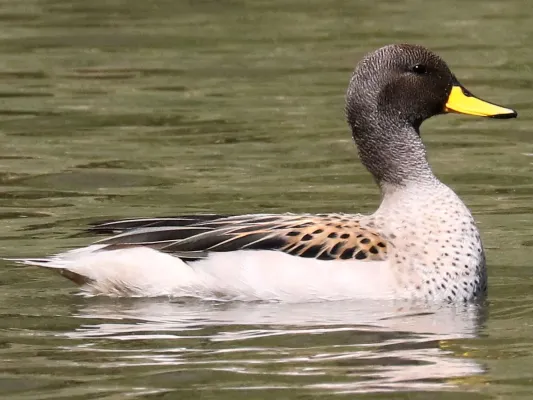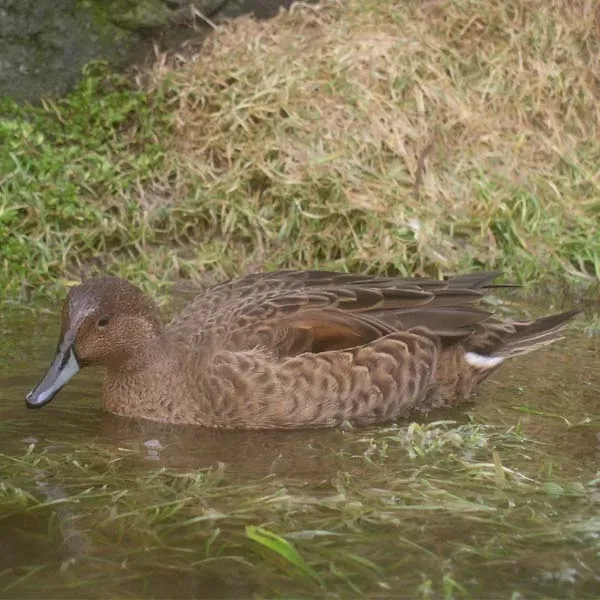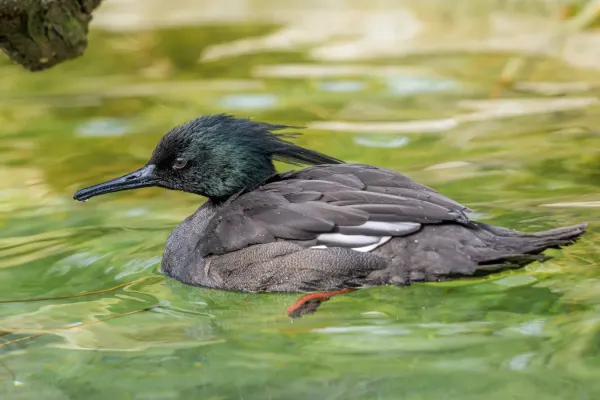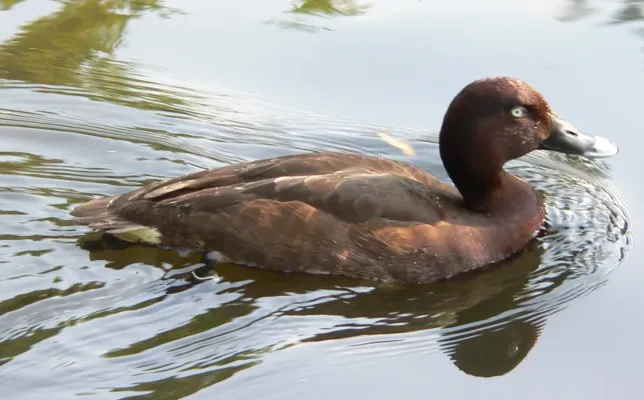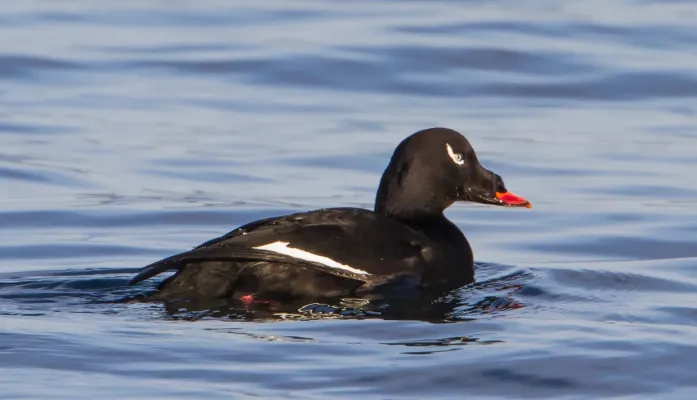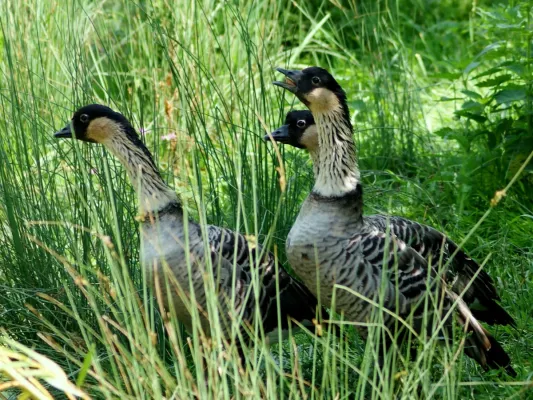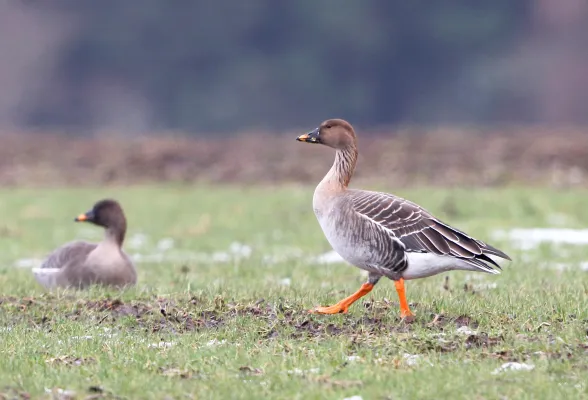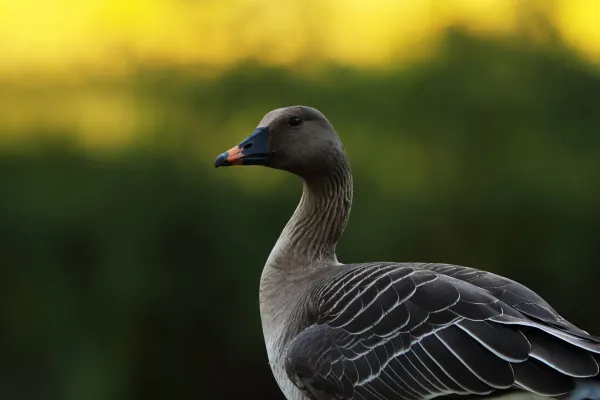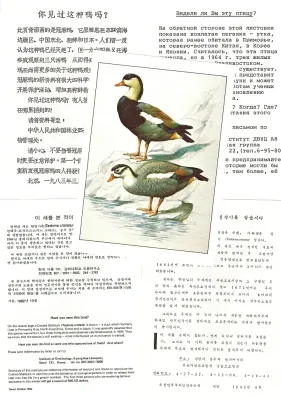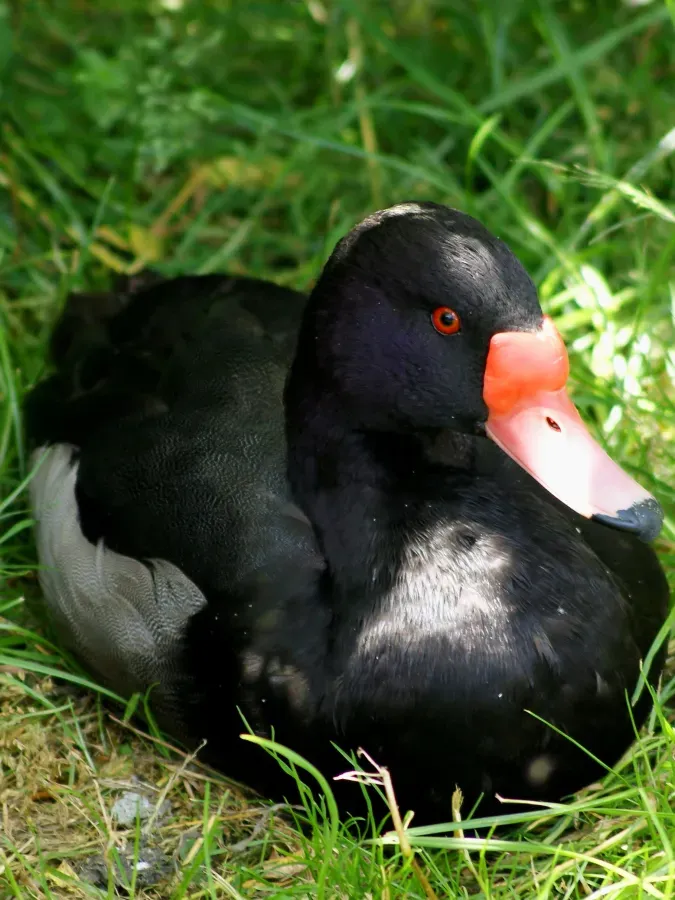
Rosy-billed Pochard
Rosy-billed Pochard
100
1 week ago
Not yet spotted on Fladder
Spotted
The Rosy-billed Pochard is a distinctive diving duck native to South America. The male is easily recognized by its bright red bill with a prominent, bulbous knob, contrasting with a sleek black body and white flanks.
Where to spot
Native to South America, primarily found in Argentina, Chile, Uruguay, Paraguay, and parts of southern Brazil. It inhabits freshwater lakes, lagoons, and marshes with abundant aquatic vegetation.
How to spot
Look for the male's bright red, knobbed bill and black body on open water. Females are duller brown with a greyish bill. They are diving ducks but can also dabble at the surface. They often gather in large flocks.
When to spot
Year-round within its range; some populations undertake local movements in response to water conditions or food availability.
Where to spot
Native to South America, primarily found in Argentina, Chile, Uruguay, Paraguay, and parts of southern Brazil. It inhabits freshwater lakes, lagoons, and marshes with abundant aquatic vegetation.
How to spot
Look for the male's bright red, knobbed bill and black body on open water. Females are duller brown with a greyish bill. They are diving ducks but can also dabble at the surface. They often gather in large flocks.
When to spot
Year-round within its range; some populations undertake local movements in response to water conditions or food availability.
The male Rosy-billed Pochard's distinctive bill knob becomes more prominent and brightly colored during the breeding season. This vibrant feature serves as a visual signal for attracting mates.
Loading...
Spotted
- Recently spotted
- 2 (Seen in the last 3 months)
- Last spotted
- 1 week ago
Monthly observations
No observations
Loading...
Nothing spotted yet

